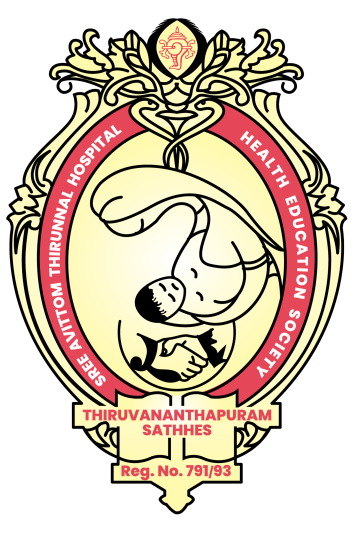Empowering Patients: The Role of Health Literacy in Enhancing Medication Adherence
In India, where a diverse population with varying levels of education and access to healthcare prevails, health literacy plays a pivotal role in shaping healthcare outcomes. Despite advancements in healthcare infrastructure and access, a significant portion of the Indian population struggles with understanding basic health information and services needed to make appropriate health decisions. This gap in health literacy can lead to poor medication adherence, resulting in suboptimal treatment outcomes and increased healthcare costs. According to a study, nearly half of the Indian patients do not adhere to their medication schedules properly, largely due to misunderstandings about their prescriptions. This blog will explore how enhancing health literacy among patients can lead to better medication adherence, improved health outcomes, and more effective healthcare management across communities. We will delve into the strategies that have proven successful, the role of technology in bridging the literacy gap, and inspiring stories from within the Indian healthcare landscape that demonstrate the powerful impact of informed and engaged patients.
Understanding Health Literacy in India
Health literacy is a critical component of effective healthcare, yet it remains underemphasized in many parts of India. In this vast country, where cultural diversity and multiple languages add layers of complexity to healthcare delivery, the ability to understand and use health information significantly impacts health outcomes.
Defining Health Literacy: Health literacy involves more than just the ability to read—it includes the capacity to interpret and make informed decisions based on health information. In the Indian context, this means navigating a healthcare system that is influenced by regional disparities in education, income, and access to resources.
Current Challenges: India faces unique challenges in improving health literacy. A significant proportion of the population has limited education, which directly affects their ability to understand health-related information. Furthermore, health services are often delivered in English or Hindi, languages not spoken by a considerable number of people at a functional level, especially in rural areas.
Impact on Public Health: The repercussions of low health literacy are profound. Individuals with limited health literacy are less likely to understand their medical conditions or the importance of their treatment plans, leading to poor medication adherence and health outcomes. For example, in chronic diseases like diabetes and hypertension, which require complex self-management, inadequate health literacy can lead to severe complications, increased hospitalizations, and higher healthcare costs.
Strategies for Improvement: Several strategies could be employed to enhance health literacy across India:
- Localized Health Education: Implementing health education programs that are tailored to local languages and cultural contexts. This could involve community health workers who are trained to communicate effectively in the local dialect.
- Visual Aids and Simplified Materials: Using visual aids and simplified medical literature can help overcome language barriers and improve understanding. Illustrative materials that depict treatment procedures, dosage schedules, and the importance of adherence could be beneficial.
- Digital Platforms: Leveraging India’s growing digital infrastructure to spread health literacy. Mobile health applications and online platforms can deliver personalized health education and reminders in multiple languages.
Telemedicine’s Expanding Role in Improving Health Literacy
As India embraces digital transformation, telemedicine has emerged as a powerful tool in enhancing health literacy and ensuring better medication adherence. This technology-driven approach not only broadens access to healthcare services but also provides a platform for patient education and engagement, particularly in remote and underserved regions.
Telemedicine in India: Telemedicine has been gaining momentum in India, driven by both government initiatives and private sector innovation. With the rise of mobile connectivity and the push from policies like the National Digital Health Mission, telemedicine is poised to play a crucial role in bridging the urban-rural healthcare divide.
Educational Outreach through Telemedicine: Telemedicine platforms offer an ideal venue for health education. Through virtual consultations, healthcare providers can explain medication usage, potential side effects, and the importance of adherence directly to patients. This one-on-one interaction helps in demystifying medical jargon and making information more accessible and personalized.
Improving Medication Adherence: Telemedicine services often include features like digital prescriptions and reminders for medication intake, which are crucial for chronic disease management. By integrating these tools, telemedicine can significantly improve patients’ adherence to their medication schedules, thereby enhancing treatment outcomes.
Case Studies Highlighting Success:
- Rural Telemedicine Programs: Several telemedicine programs targeting rural areas have shown promising results in improving health literacy. For example, programs in states like Karnataka and Telangana have utilized local health workers equipped with tablets and internet connectivity to deliver health services and education to remote villages.
- Chronic Disease Management: Telemedicine initiatives focusing on chronic conditions like diabetes and hypertension have enabled continuous doctor-patient engagement, which is vital for effective disease management. These programs help patients understand their conditions better and stick to their treatment plans.
Challenges and Opportunities: While telemedicine offers significant benefits, there are challenges to be addressed, such as ensuring consistent internet access in remote areas and training medical staff to deliver effective online consultations. Moreover, there is a need for greater awareness among the population about the availability and benefits of telemedicine services.
By further developing and promoting telemedicine, India can make substantial progress in improving health literacy, especially in areas where traditional healthcare infrastructure is lacking. This digital approach not only supports better health outcomes but also empowers patients to take control of their health, fostering a more informed and health-literate society.
Automation in Pharmacies
The adoption of automation in pharmacies across India is revolutionizing how medications are dispensed, managed, and understood by both pharmacists and patients, playing a critical role in enhancing health literacy.
Streamlining Dispensing Processes: Automated dispensing systems in pharmacies minimize human error and streamline the process of medication dispensing. These systems precisely manage and track medication stocks, ensuring the right medication is provided at the right dose and time. For example, automated dispensers release medications based on electronic prescriptions, which can be directly linked to patient education about their proper use, enhancing understanding and adherence.
Enhancing Inventory Management: Automation tools help pharmacies efficiently manage their inventory, reducing the risks of overstocking or running out of critical medications. Intelligent systems analyze usage patterns to predict future demand, ensuring that essential medications are always in stock. This not only maintains the continuity of care but also educates patients about alternative options if their primary medication is temporarily unavailable.
Digital Interaction and Education: With the integration of automation, pharmacies have the opportunity to provide digital interactions at the point of sale. For instance, kiosks or digital screens can display personalized medication information, usage instructions, and potential side effects as patients collect their medications. This real-time education enhances patients’ understanding and encourages them to engage actively with their healthcare regimen.
Leveraging Big Data and Predictive Analytics
In the realm of healthcare, big data and predictive analytics are transforming the way we approach everything from epidemic outbreaks to personal health management. In India, where vast populations and wide disparities in healthcare access exist, these technologies offer significant opportunities to enhance health literacy and ensure that patients are better informed and more engaged in their healthcare.
Harnessing Big Data for Public Health: Big data analytics involve the processing of large sets of data to uncover patterns, trends, and associations, especially relating to human behavior and interactions. In healthcare, this means analyzing data from multiple sources including electronic health records, pharmacy sales, online health queries, and more. For instance, analyzing trends from these sources can help predict outbreaks of diseases, understand public response to health campaigns, and optimize the distribution of medical resources.
Predictive Analytics in Personalized Medicine: Predictive analytics uses statistical techniques to analyze current and historical facts to make predictions about future or otherwise unknown events. In the context of medication adherence, predictive models can help identify patients who are at risk of skipping medications or suffering from potential side effects. This information allows healthcare providers to intervene proactively, provide personalized guidance, and educate patients on the importance of adherence to treatment plans.
Enhancing Medication Adherence through Predictive Tools: Predictive analytics can also inform the development of personalized patient education programs that address specific barriers to medication adherence. For example, if data shows a particular demographic has a high rate of non-adherence due to economic factors, targeted educational programs can be developed to inform these patients about generic medication options or financial assistance programs.
Building a Healthier Future Together
As we conclude our exploration of how technological innovations and community engagement are transforming healthcare accessibility and medication adherence in India, it’s clear that these advancements have the power to create profound changes. The journey towards improved health literacy and accessible healthcare is ongoing, and it requires the collective effort of individuals, healthcare professionals, and organizations.
The initiatives discussed, from telemedicine to pharmacy automation and big data analytics, are more than just technological solutions; they are pathways to empower patients and make healthcare equitable. These tools not only enhance the efficiency of healthcare delivery but also ensure that every individual has the knowledge and resources to manage their health effectively.
Your involvement in this movement—whether through volunteering, advocacy, partnerships, or simply by spreading awareness—can drive significant impact. Each contribution helps build a foundation for a healthier society, where informed patients can make better health decisions, and where quality healthcare is a reality for all.


